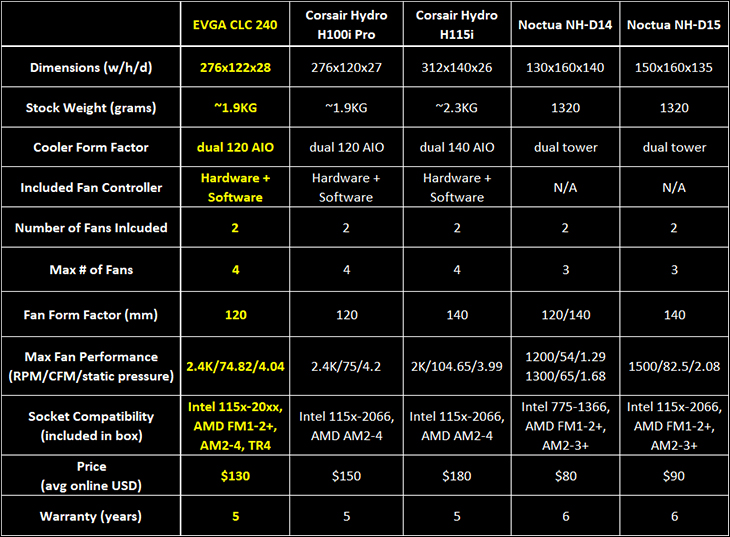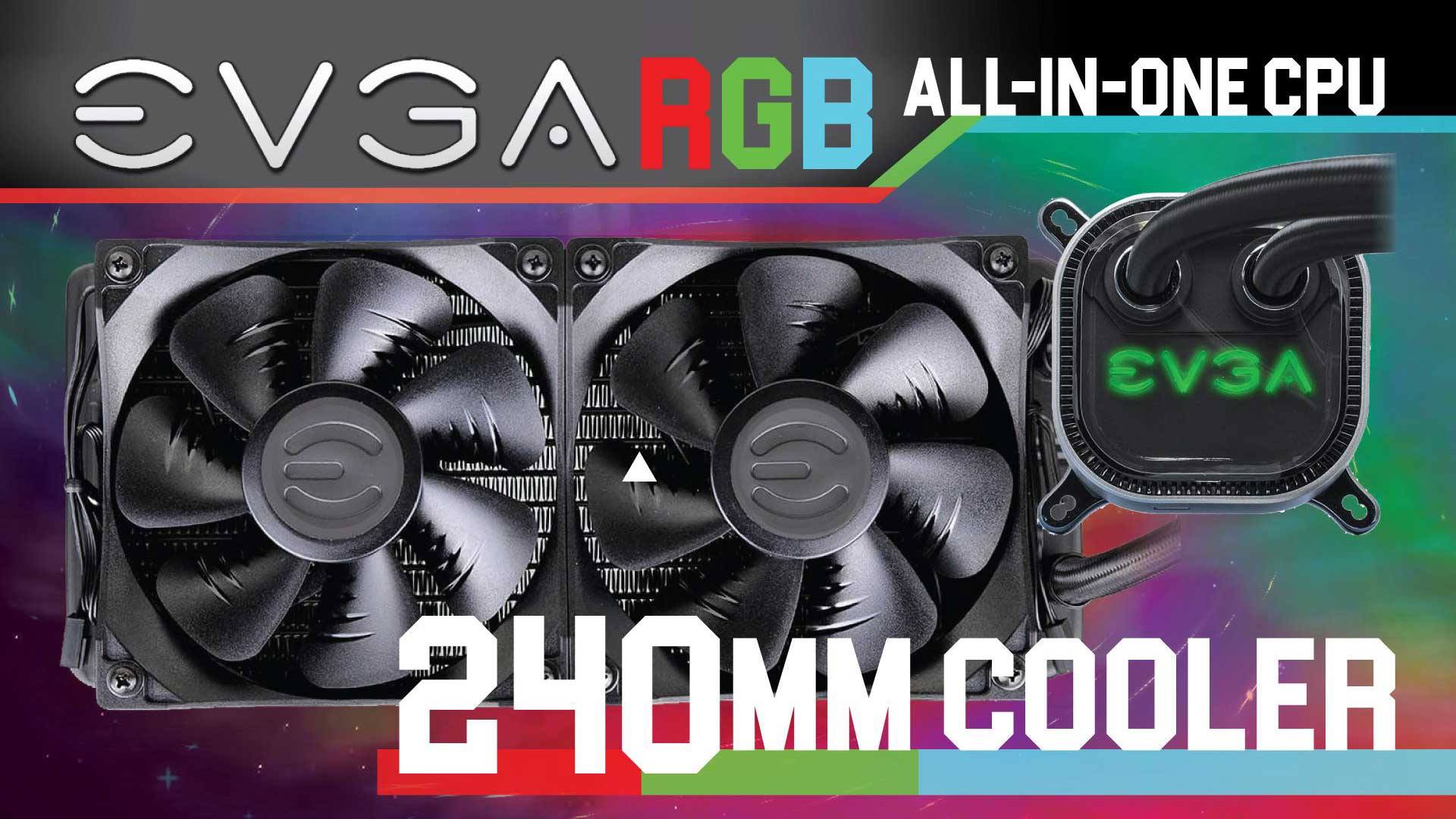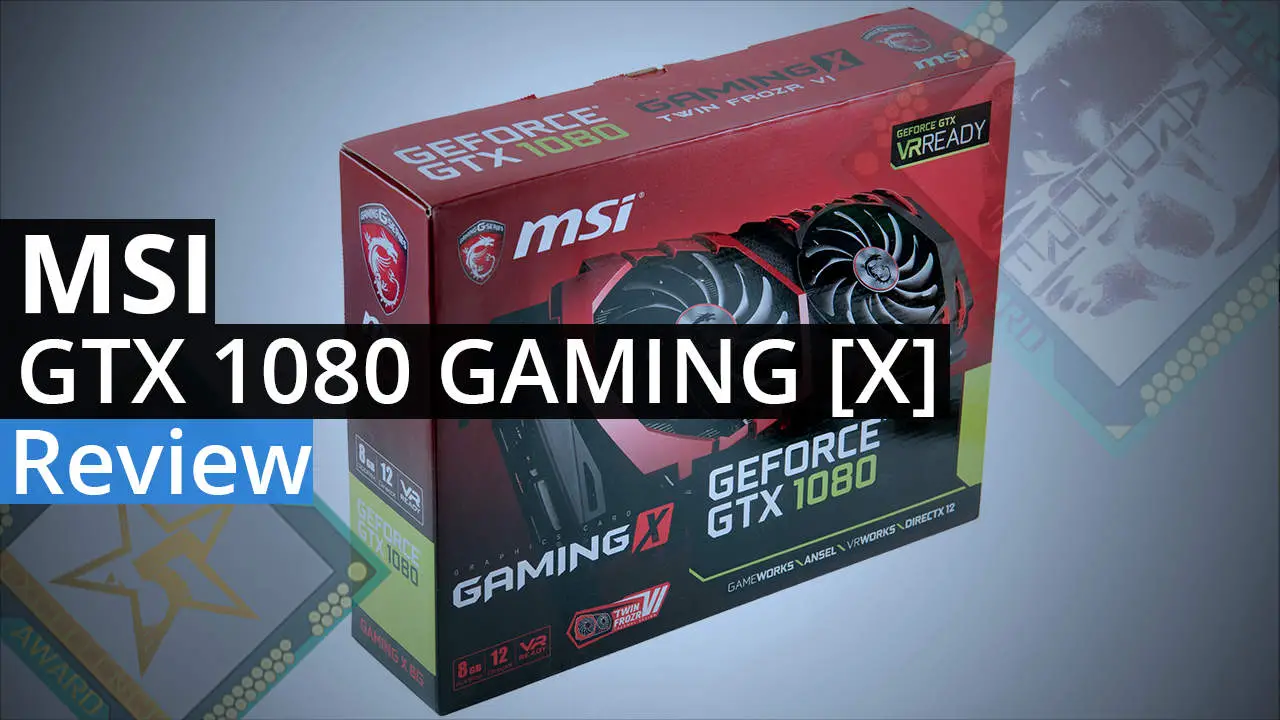In the past few years sealed, closed loop cooling solutions (colloquially referred to as All In One or ‘AIO’) CPU cooling solutions have taken over large swaths of the CPU cooler marketplace. The reasons vary from buyer to buyer. For some, it is the fact that their noise to performance ratio is excellent. Others it is the easier installation process compared to mega-sized air cooler. Other still, the abilities to handle higher heat loads without worry over bending a motherboard from the cooler’s weight (as the case itself bears the 2KG+ burden). No matter the reason, the fact remains the same AIOs are what many custom builders and PC enthusiasts reach for when they want serious cooling performance. Today we will be paying close attention the EVGA CLC 240mm AIO.

On the surface the EVGA Closed Looping Cooling solution, model 240mm (aka EVGA CLC 240) does appear to check all the right boxes. 240mm refers to its radiator form-factor (in that it can handle two 120mm fans per side of the radiator) and as such lives in the niche that most people call ease of use… as nearly any modern case can handle a ‘240mm’ radiator, yet not all can handle 280mm (2x140mm) rads. Though mainly it is because the performance a 240mm AIO offers simply smokes a single 120 or 140mm radiator-based device. Equally important is by stepping down from the 280mm sized devices buyers can save a noticeable amount of cash. By the same token 240mm AIO’s are not known for their low asking price. In this case, the EVGA CLC 240 is an outlier. With an asking price that is noticeably less than what Corsair or NZXT demand for their 240mm form-factor AIO models the EVGA CLC 240’s $110 real-world cost seems like a veritable bargain.
Make no mistake, the EVGA CLC 240 (as we are going to refer to it in this review) is not a cheap cooler, rather it is just inexpensive compared to the typical 240mm. What we mean by this is the lowered asking price is not reflected in a lowered build quality or corner cutting. Instead, it uses an excellent example of ASETEK’s gen 5 AIO design, comes with integrated LEDs, an integrated fan controller (albeit one that requires software to be customizable). Put another way these self-same components in other manufacture’s offerings cost significantly more yet offer no increase in quality. Though when it comes to ASETEK based AIO’s it really is the fans’ performance abilities that matter more than the generation of waterblock and pump used… as ASETEK is the Apple of the AIO world and love to do incremental upgrades rather than massive improvements from year to year. In this critical area EVGA has cut no corners and included two highly potent, highly advanced fans.
To help show how the EVGA stacks up against Gen 6 Asetek based AIOs we have included an extra AIO in our charts: Corsair’s H100i Pro which uses a newer AESTEK (aka ‘gen 6’) design rather than the same building blocks the EVGA CLC 240 (aka ‘gen 5’) uses. So, without further ado let’s take this big boy for a spin.











